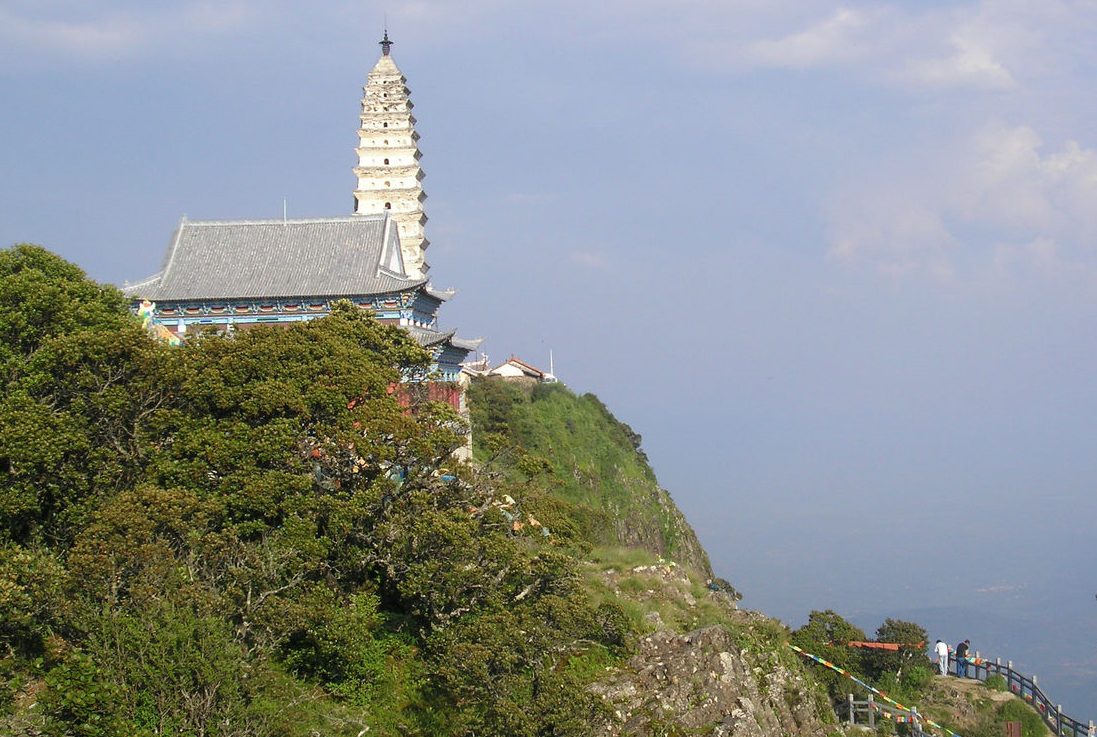Jizu Mountain, named for its resemblance to a chicken’s foot, is a Buddhist pearl in Binchuan County, Dali, Yunnan.
According to the Records of the Buddha’s Kingdom of the Jin Dynasty, it was once an important hub for the southward spread of Buddhism; in the Records of the Western Regions of the Great Tang Dynasty, Venerable Xuanzang compared it to the holy sites of Buddhism in ancient India.
Jizu Mountain is not only the first ancestor of Zen Buddhism, the practice site of Zun Shi Jia Ye, but also a bridge between the Central Plains and Southeast Asia Buddhist cultural fusion.
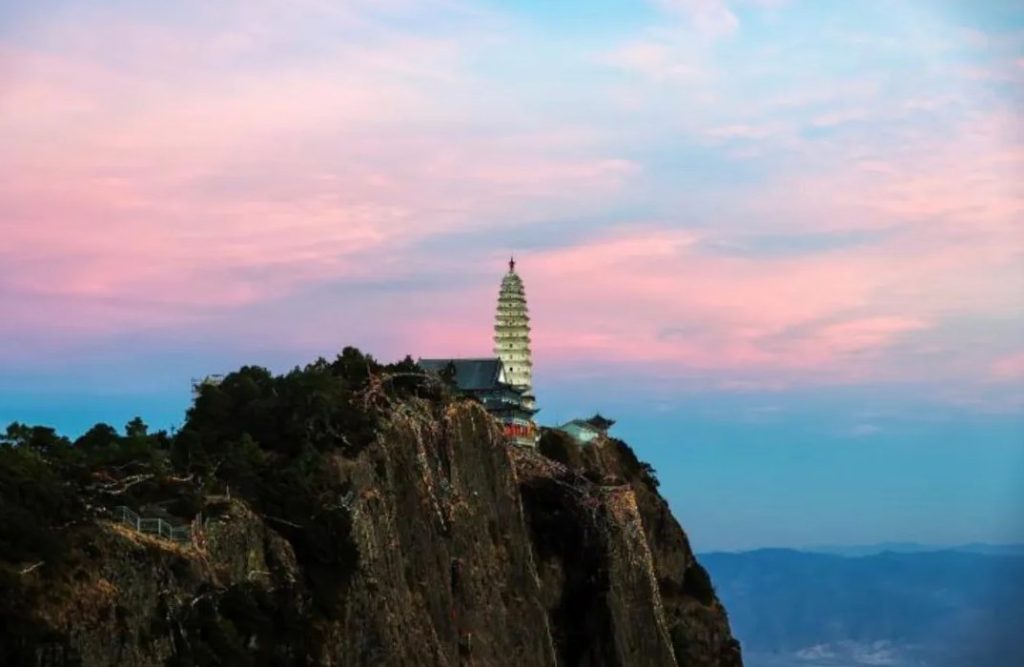
Table of Contents
Historical Lineage: A Thousand Years of Buddhist Legacy
The legacy of the Tang and Song dynasties: the Song Dynasty monk Tzu Chi built a temple here, and the temple complex took shape, becoming a pilgrimage center for Southeast Asian Buddhist believers.
Ming and Qing Dynasties: During the Ming and Qing Dynasties, there were as many as one hundred temples in Jizu Mountain, with a large number of monks and nuns, and it was known as the “Buddhist Capital of the Spirit Mountain”.
Cultural imprint: Xu Xiake, a Ming Dynasty traveler, visited Jizu Mountain three times, leaving his admiration for the “heavenly pillar of Buddha’s light”, making it a spiritual mecca for hikers.
White Craftsmanship: The Buddhist Code in Architecture
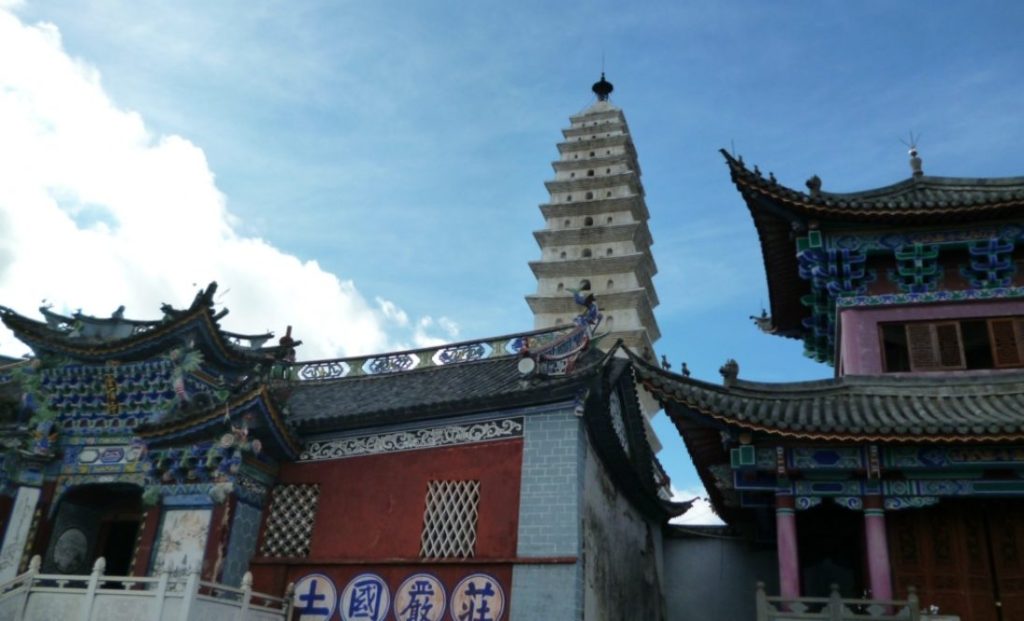
The architecture of Jizu Mountain is a fusion of Bai wisdom and Buddhist culture:
The Hall of the Robe: built on the high point of the mountaintop, with flying eaves mirroring the peaks, the hall enshrines a wooden statue of Zunyi Jia Ye, which is simple and solemn.
Zunsheng Pagoda: Nanzhao and Tubo craftsmen jointly constructed the Tibetan-style white tower 22 meters high, and the bright moon, bright tower to form a “three towers a line” wonder.
Huashoumen: natural stone door on the wall, legend has it that it was carved by the divine power of Gaya Zunyi, and the right side of the “Sheshin Cliff” is surrounded by clouds and mist, just like a fairyland.
Da Shi Pavilion: Heavy-eaved hermitage-style building, Bai artists carved doors, windows, arches and exquisite, copper-cast Buddha statues solemn and dignified.
Must-visit attractions: a blend of nature and faith
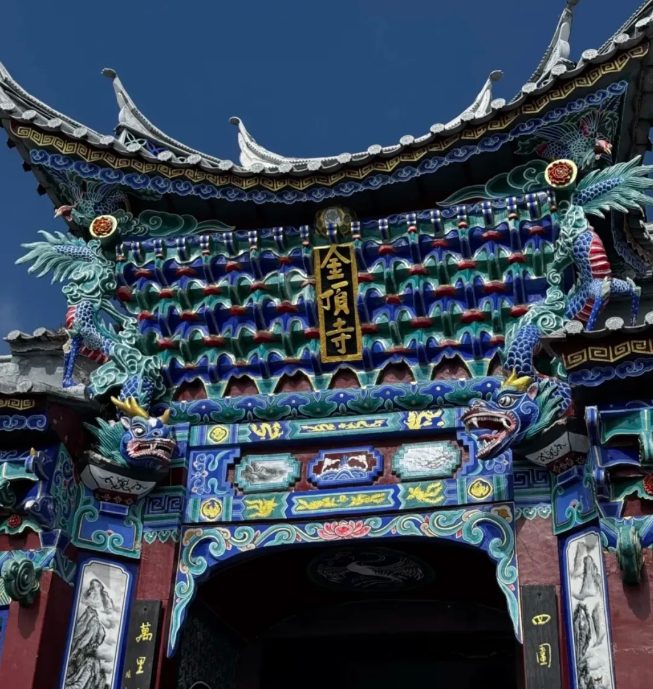
Golden Peak Temple
Located at the highest point of Jizu Mountain, you can watch the sunrise from the east and the Erhai Sea from the west, with the Saffron Stone and Huashou Gate close by.
How to play: Take the ropeway or hike to the top, clockwise around the temple to pray for blessings, and feel the shock of the “heavenly pillar of Buddha’s light”.
Kaya Temple
The temple enshrines a sandalwood statue of Gautama carved by Ananda himself. Legend has it that Gautama Buddha passed his clothes here during the seventh year of King Ling of Zhou.
Details: the architectural style of the Tang Dynasty is preserved, with ancient trees in front of the hall and smoke rising from a copper incense burner.
Zun Sheng Pagoda Temple
Wonders: When the moon is full in the Mid-Autumn Festival, the bright moon, Zun Sheng Pagoda and Lanyan Pagoda are connected into a line, forming the wonderland of “Autumn Moon in the Pagoda Courtyard”.
History: Lijiang during the Ming Chongzhen years, the local governor of Lijiang Mu Jing built, now for the restoration of Taiwan’s masters, nunnery resident of more than 40 people.
Spirit Mountain will be Square
The main square of the gate of Jizu Mountain, inscribed by Zhao Puchu with “Ling Shan Yi Yi”, and the left and right squares are engraved with “Heaven opens up the Buddha’s country” and “Earth springs up the city of transformation”.
Ceremony: Passing through this square means entering the Buddha’s country, and the pilgrimage to the mountain officially begins.
Recommended hiking routes: many ways to explore the secret place
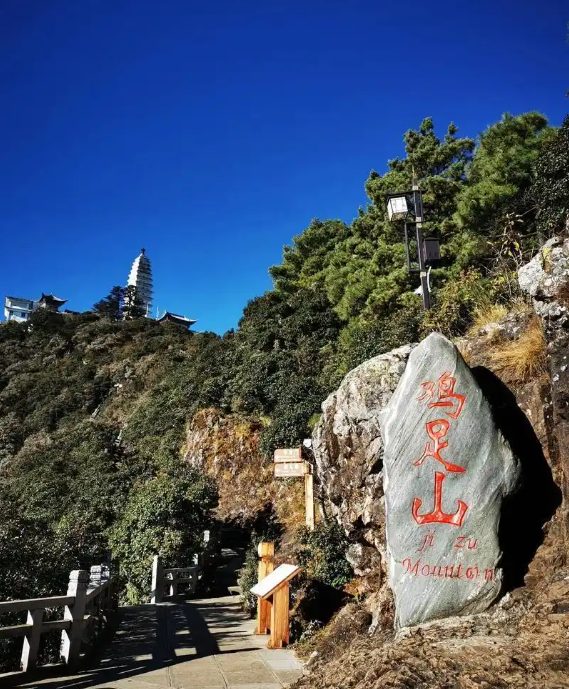
Classic Pilgrimage Line (4-6 hours)
Route: Washin Bridge→Lingshan One Square→Jinding Temple→Surplice Stone→Huashou Gate
Highlights: listen to the flowing water by the Washin Bridge, overlooking the Cangshan Mountain and Erhai Sea from the Jinding Temple, exploring the Sacred Cliffs at the Huashou Gate.
Tips: leave at 8:00 a.m., take the ropeway up and down the mountain to save energy.
Ancient Road Exploration Line (6-8 hours)
Route: Zhu Sheng Temple → Hollow Ancient Tree → Sidan Temple Ruins → Wuhuaan → Shi Zhong Temple → Biyun Temple
Highlights: Hollow ancient tree hiding Zen, Shizhong Temple grottoes with exquisite murals, Biyun Temple tea pavilion resting and watching the sea of clouds.
Niche experience: visit the ruins of ancient temples, trace the footsteps of Xu Xiake.
Fitness and Recreation Line (5-7 hours)
Route: Lingshan Yi Yi→JiuLian Temple→Repaying Grace Temple→Daishi Pavilion→Yulong Waterfall→Golden Thread Hanging Gourd
Highlights: Jade Dragon Waterfall with flying pearls and splashing jades, Golden Thread Hanging Gourd wonders (waterfalls and ancient trees intertwined like a gourd).
Contrasting experience: seamless switch from Buddhist temple to natural wonders.
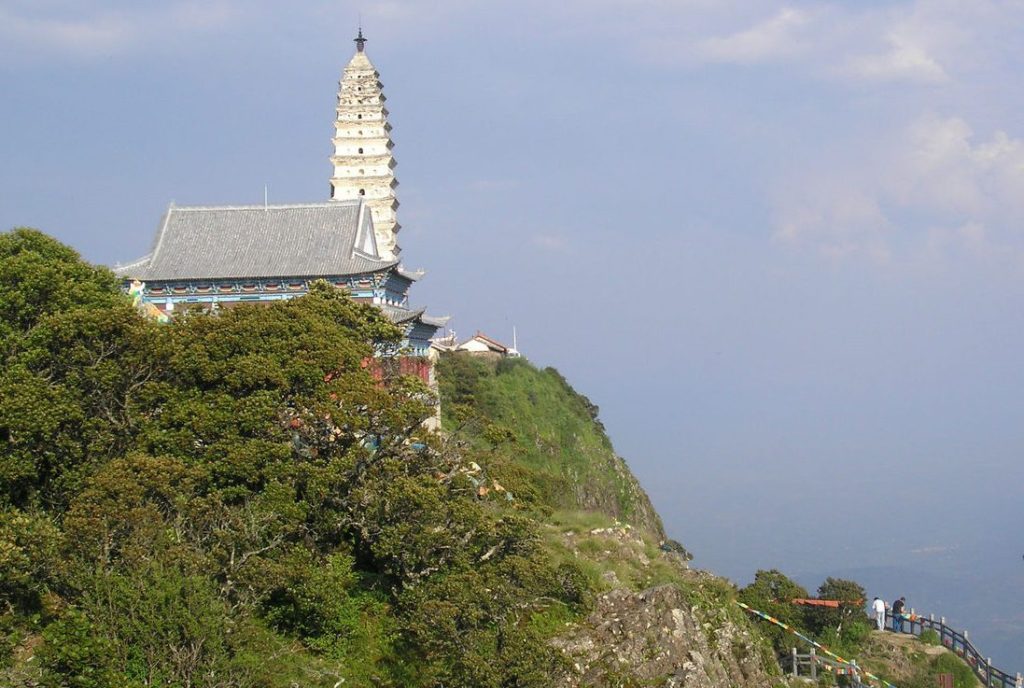
Cuisine not to be missed: the taste of the mountains on the tip of the tongue
Jizushan Rainbow Lunch (vegetarian)
Recommendation: Vegetarian buffet, wild mushroom stew, vegetarian platter, 20 RMB per person, excellent value for money.
Time: 7:30-8:30, 12:00-13:00, 17:30-18:30, out of time.
Jinyuanxiang Dining Hall (Bai cuisine)
Must Order: Carved Plum Button Meat, Binchuan Sea Slightly Fish, Milk Fan Soup, RMB 50 per capita, fresh ingredients.
Accommodation Recommendations: Quiet Habitat in the Mountains
Wangshan Old Mansion B&B (Economy)
Characteristics: A hundred years old Bai residence remodeled, the courtyard is rustic, the boss will tell the legend of Jizhu Mountain.
Price: about 300 RMB/night for large bed room, including breakfast.
Jizu Mountain Hotel (Comfort)
Advantage: the only hotel in the scenic area, push the window to see the mountain, convenient to get up early for hiking.
Price: Standard room about RMB 400/night, including double breakfast.
Transportation and Tickets: Easy to reach guide
Self-drive: Navigate to “Jizushan Tourist Bus Terminal”, get off at Jizushan South Toll Station of Binghe Expressway, about 2 hours’ drive.
Passenger transportation: Take a shuttle bus from Dali Xingsheng Road Bus Terminal to Binchuan, and then transfer to Jizu Mountain special bus.
Tickets: RMB 55 per person, free for children under 1.2 meters; RMB 72 for round-trip ropeway, and more cost-effective for package tickets (ticket + ropeway + sightseeing bus = RMB 155).
Opening hours: 8:00-18:00, ropeway 8:30-17:30.
Niche experience: secret playground to avoid the crowds
Night Stargazing: Camping at the Golden Dome Temple at the top of the mountain (application required), the Milky Way is clearly visible.
Searching for the Buddha’s light: after the rain in summer and fall, Tianzhu Peak is prone to the “Buddha’s light”, which is not to be missed by photography enthusiasts.
Ancient Trail: Hike along the ancient trail from Zhusheng Temple to Silent Light Temple and encounter squirrels and wild monkeys.
Jizu Mountain is not only a collection of temples, but also a fusion of the dangerous peaks written by Xu Xiake, the wisdom of Bai craftsmen and the taste of the mountains on the tip of your tongue. Avoid the crowds, measure this Buddhist Pure Land with your feet, and feel the beauty of the intertwining of nature and faith!
